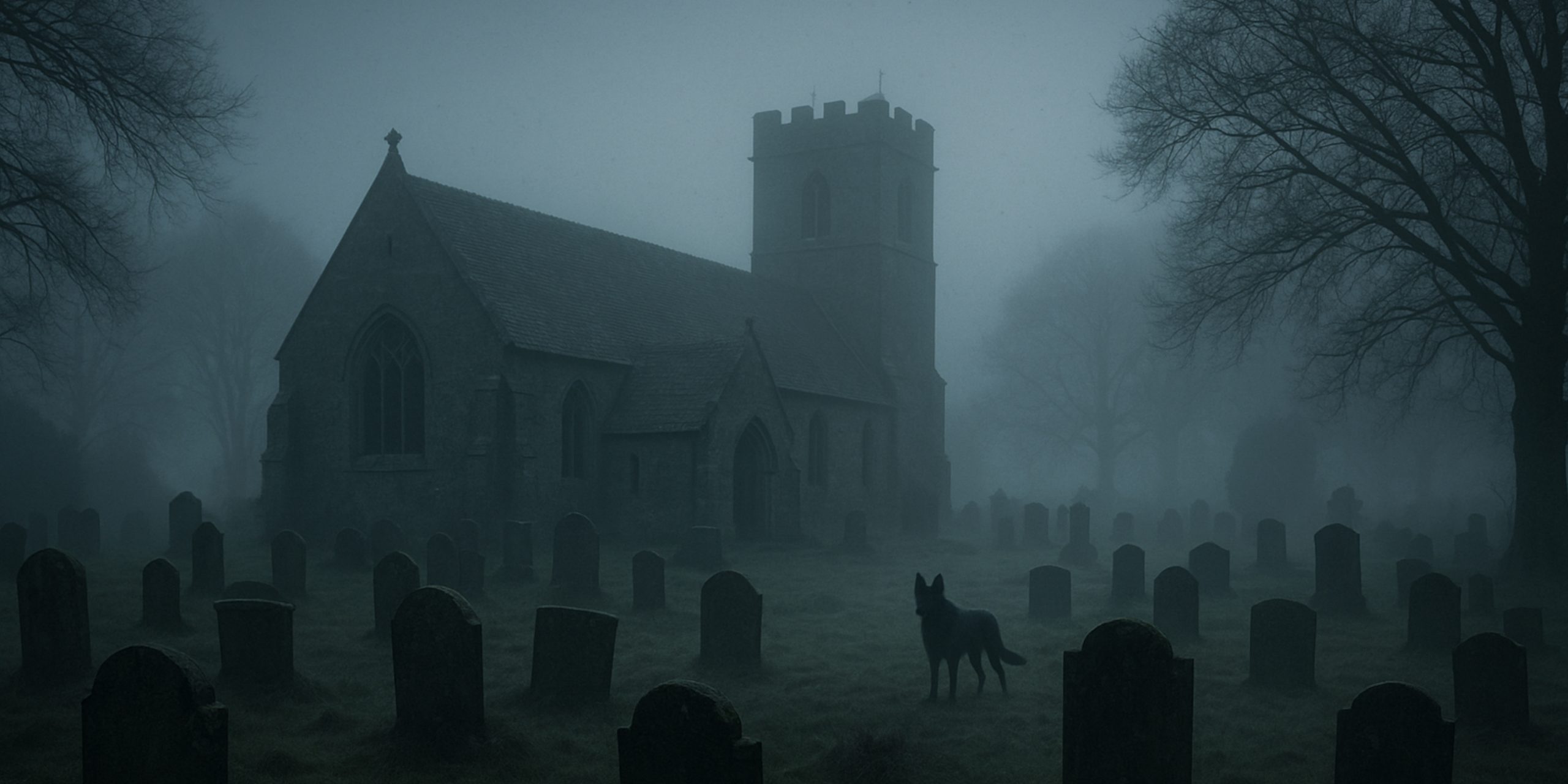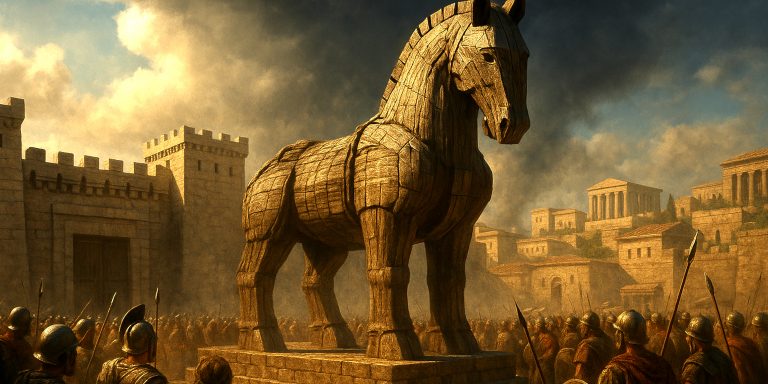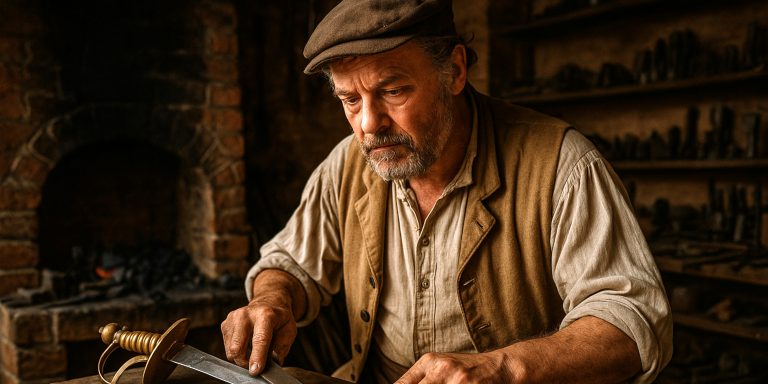
Of all the ghosts that haunted medieval Britain, the Church Grim was the most paradoxical. It wasn’t a soul condemned to wander, nor a malicious spirit seeking vengeance, but a guardian, a spectral sentinel said to protect churchyards from desecration. It might not sound terrifying at first, but the image of a black dog pacing a graveyard at midnight, eyes glowing like coals, is enough to put anyone off late-night strolls through consecrated ground.
Origins of the Church Grim
The legend of the Church Grim likely grew out of early Christian efforts to overwrite older pagan burial customs. In Norse and Anglo-Saxon lore, animals, particularly dogs, horses, or even pigs, were sometimes buried alive beneath church foundations as a protective sacrifice. It was grim business, literally, and the belief followed that the spirit of the animal would linger on, guarding the ground from evil forces or grave robbers.
This was not an isolated superstition. Scandinavia, Germany, and the British Isles all have versions of the legend. In England, the Church Grim was often imagined as a large black dog, while in Scandinavian tales it might appear as a spectral man, ram, or even a crow.
What Did the Church Grim Do?
The Church Grim’s main role was to guard the churchyard. It was thought to patrol the perimeter at night, warding off witches, thieves, and demons seeking to defile sacred ground or disturb the dead.
However, the Grim also had a darker, more foreboding side. When a death in the parish was near, the Grim was said to toll the church bell invisibly or be seen sitting in the tower, its shape faintly visible in the shadows. Whoever saw it knew their time was short.
In some accounts, the first person buried in a new churchyard was doomed to guard it forever. To spare human souls from such duty, villagers supposedly buried a black dog alive as a stand-in guardian. The theology was questionable, but the logic was solid, let the dog do the night shift.
Variations Across Europe
| Region | Description of the Grim | Role in Folklore |
|---|---|---|
| England | Black dog, often silent, with glowing eyes | Guarded churchyards and foretold death |
| Scandinavia | Spirit of a buried animal or priest | Protected consecrated ground from the devil |
| Germany | “Kirchhofgeists” or graveyard ghosts | Watched over graves, sometimes punishing sinners |
| Wales | “Cŵn Annwn” (Hounds of the Otherworld) | Not true Grims, but closely related death omens |
The overlap with black dog folklore is hard to miss. From Black Shuck in East Anglia to Padfoot in Yorkshire, the Church Grim seems to be part of a much wider medieval fixation on spectral dogs and the thin line between protection and menace.
Symbolism and Interpretation
The Church Grim sits at a fascinating crossroads between Christian symbolism and pagan survivalism. It embodies the moral order of the Church, but its origins lie in ritual sacrifice. It guards holy ground, yet it is born from something unholy. It is both protector and omen, saint and shadow.
Modern historians see the Church Grim as a reflection of medieval anxiety, a need to defend sacred space against the unknown. The Grim’s existence in folklore is less about dogs and more about boundaries: between life and death, sacred and profane, safety and fear.
The Church Grim in Literature and Culture
While it’s never achieved the celebrity of Dracula or the Headless Horseman, the Church Grim has wandered into modern fiction now and then. J.K. Rowling referenced it indirectly in Harry Potter and the Prisoner of Azkaban (the “Grim” being a death omen in the wizarding world), while Neil Gaiman’s The Graveyard Book owes something to the same old cemetery superstitions.
Even now, if you walk through an old English churchyard at night and catch a glimpse of movement in the corner of your eye, you might wonder, was that a fox, or something older keeping watch?
Legacy and Modern Sightings
Few today claim to have seen a Church Grim, but ghost hunters and folklorists still chase its legend. In many old parishes, especially in the North of England, stories persist of a shadowy black figure by the gate or a soundless bark near the graves.
Though churchyards are quieter now, the tales remind us of how medieval people saw their world. sacred, dangerous, and guarded by forces they barely understood.
Personal Reflection
There’s something oddly comforting about the Church Grim. Yes, it’s creepy, but it’s also loyal. It’s the idea that even the dead have guardians. Medieval people feared the unknown, but they also built myths to make sense of it. The Grim wasn’t just a ghost, it was the reassurance that someone (or something) was watching over the boundary between this world and the next.
And honestly, if I were buried in a medieval churchyard, I’d want a big black spectral dog watching the gate too.



